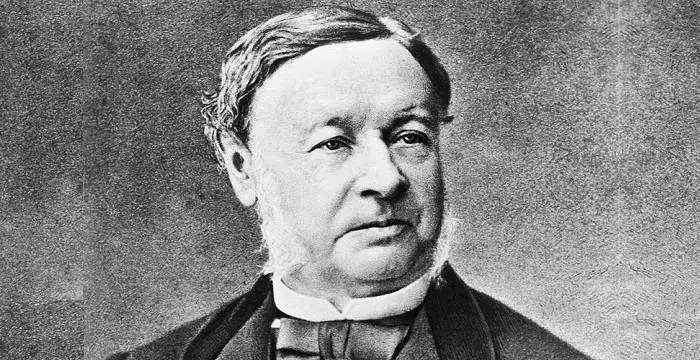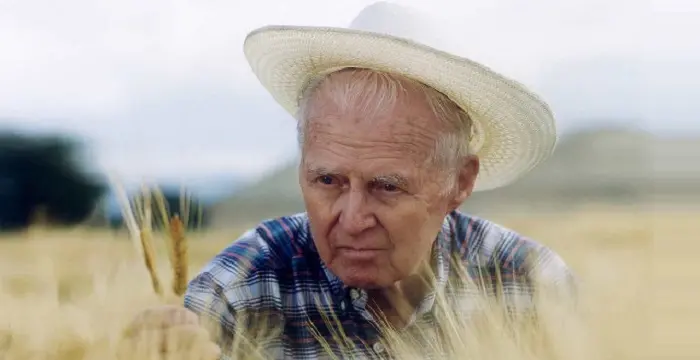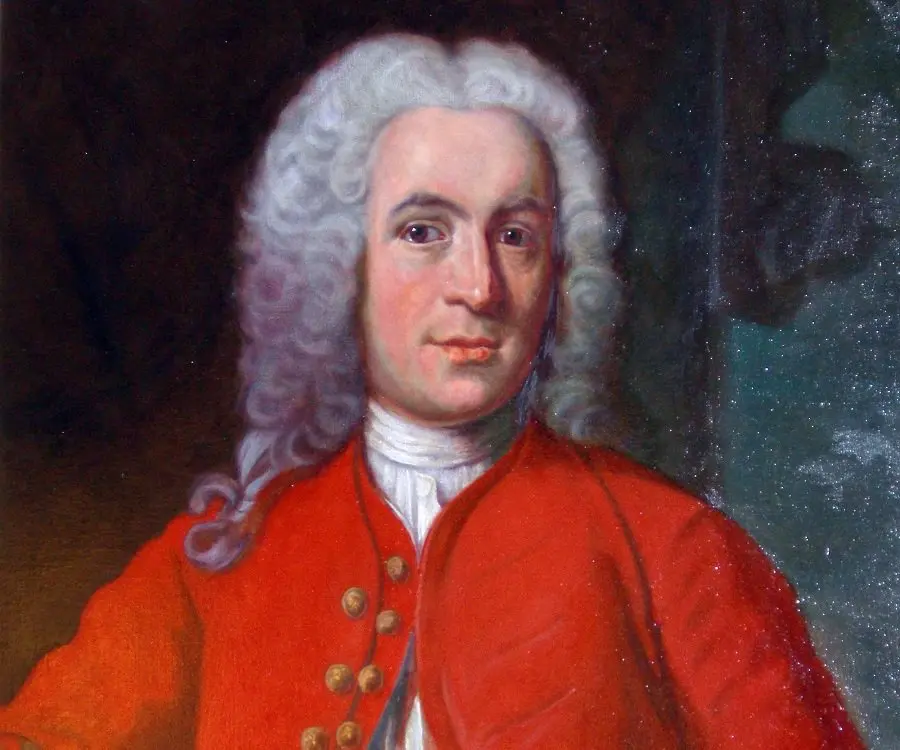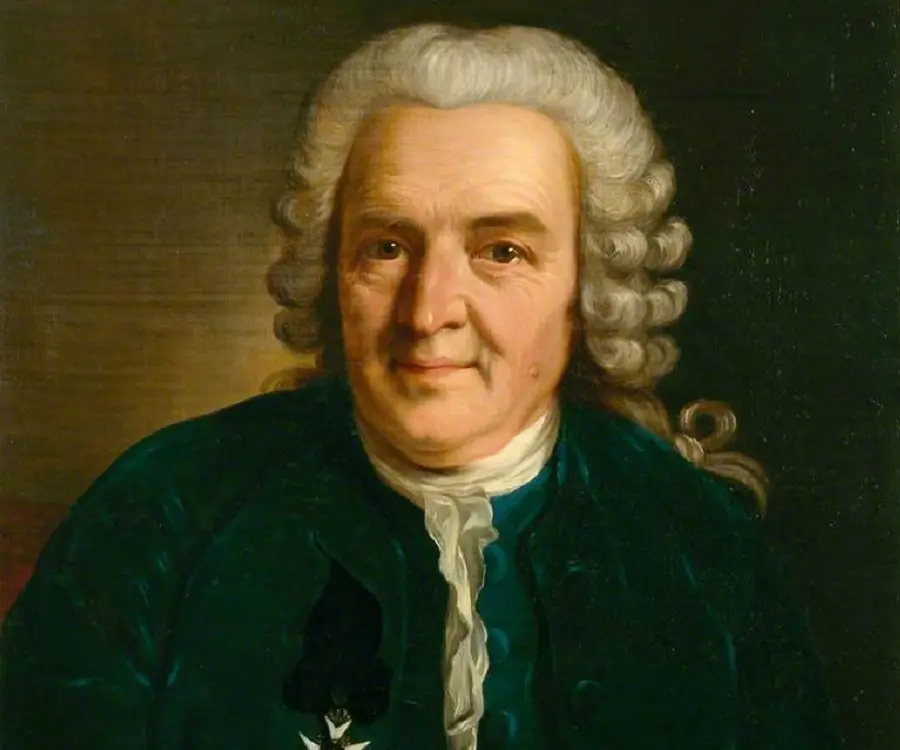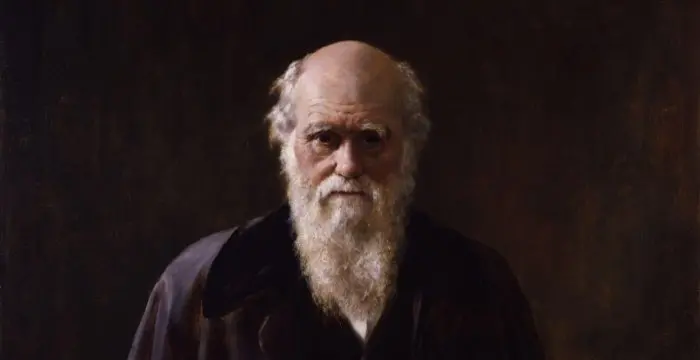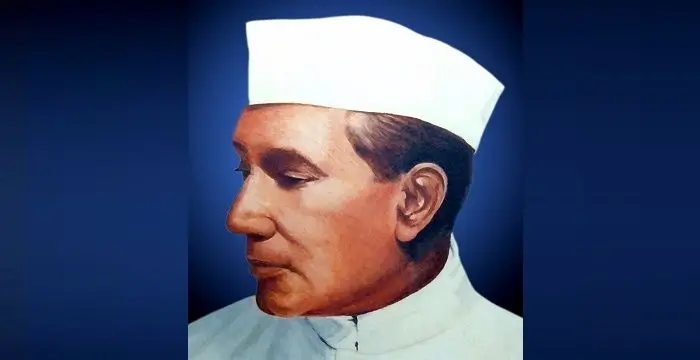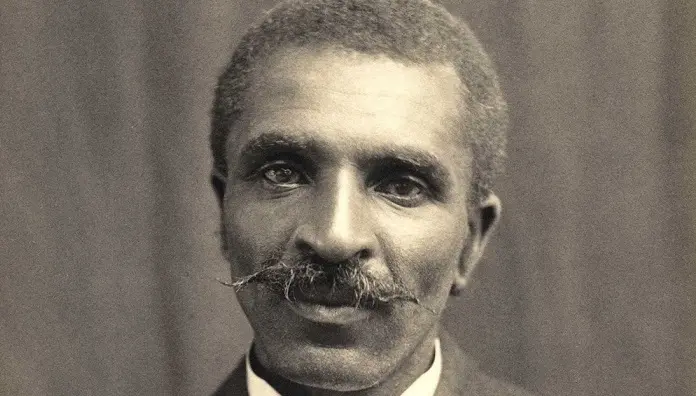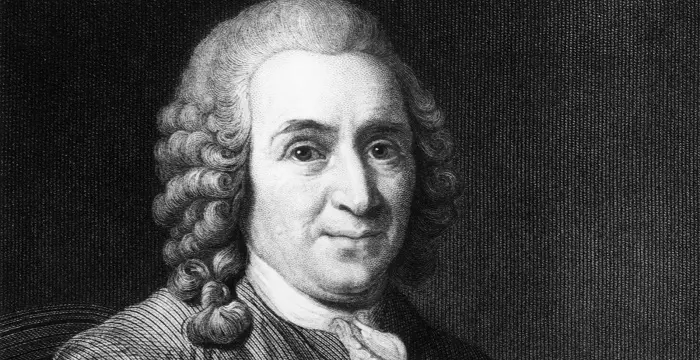
Carl Linnaeus - Scientists, Family and Family
Carl Linnaeus's Personal Details
Carolus Linnaeus was a renowned Swedish biologist popularly known as the ‘Father of Modern Taxonomy’ who founded the binomial nomenclature
| Information | Detail |
|---|---|
| Birthday | May 23, 1707 |
| Died on | January 10, 1778 |
| Nationality | Swedish |
| Famous | Scientists, Biologists, Botanists |
| Spouses | Sara Elisabeth Moræa |
| Siblings | Samuel Linnaeus |
| Known as | Carl von Linné |
| Childrens | Carl Linnaeus the Younger, Elisabeth Christina von Linné, Johannes von Linné, Lovisa von Linné, Sara Cristina von Linné, Sara Magdalena von Linné, Sophia von Linné |
| Universities |
|
| Founder / Co-Founder |
|
| Birth Place | Råshult |
| Religion | Church of Sweden, Lutheranism |
| Gender | Male |
| Father | Nils Ingemarsson Linnaeus |
| Mother | Christina Brodersonia |
| Sun Sign | Gemini |
| Born in | Råshult |
| Famous as | Botanist |
| Died at Age | 70 |
// Famous Biologists
Juliane Koepcke
Juliane Koepcke is a German-Peruvian biologist, who was the lone survivor among the 92 passengers and crew of the ill-fated LANSA Flight 508 that crashed in the Peruvian rainforest on 24 December 1971. Know more about her life in this biography.
Theodor Schwann
Theodor Schwann was a German physiologist who discovered the Schwann cells in the peripheral nervous system. This biography of Theodor Schwann provides detailed information about his childhood, life, achievements, works & timeline.
Norman Borlaug
Norman Borlaug was an American biologist known as the “Father of the Green Revolution”. This biography of Norman Borlaug provides detailed information about his childhood, life, achievements, works & timeline.
Carl Linnaeus's photo
Who is Carl Linnaeus?
Carl Linnaeus, often known by the Latin form of his name as Carolus Linnaeus, is the father of modern biological classification systems. Born into a small parsonage in the southern tip of his country at the dawn of the Renaissance, Carl was given a thorough home school education by his father. Later, Carl would have his curiosity about the natural world piqued during lengthy childhood trips and explorations. Parleying his intellectual curiosity into formal studies, Linnaeus enrolled in a number of universities to study under masters in the field. By the time he graduated, Linnaeus had become an expert biologist, and was asked to give lectures on the subject. Linnaeus then received sponsorship to conduct numerous field studies where hundreds, if not thousands, of species of flora and fauna were identified, labeled and catalogued. The eminent biologist continued his work until he finally published a series of scientific masterpieces, outlaying his system for dividing both the animal and plant kingdoms into a nested series of categories and sub-categories. Although it has been modified since its first iteration, the classification system invented by Linnaeus still forms the backbone of all modern biological sciences today. Linnaeus continued a long and distinguished career as a researcher, academic and professor until his death at an advanced age from natural causes
// Famous Botanists
Charles Darwin
Charles Darwin was one of the most influential figures in human history. Go through this biography to get details about his life, profile and timeline.
Birbal Sahni
Birbal Sahni was an Indian palaeobotanist who founded the Birbal Sahni Institute of Palaeobotany in Lucknow. This biography of Birbal Sahni provides detailed information about his childhood, life, achievements, works & timeline.
George Washington Carver
George Washington Carver was an American scientist and inventor. This biography provides detailed information about his childhood, life, achievements and timeline.
Childhood & Early Life
Carl Linnaeus was born on May 23, 1707 in Rashult, part of the Stenbrohuit Parish in Sweden. His father was Nils Ingermarsson Linnaeus and his mother was Christina Brodersonia.
Nils was an amateur botanist when not fulfilling his duties as a Lutheran minister and curate in southern Sweden. Carl eventually had three younger sisters and a brother. He learned a variety of advanced subjects from home school courses administered by his father and some hired tutors.
Career
By age 17, Linnaeus had become well-versed in all of the existing botanical literature. That same year, he entered the ‘Vaxjo Katedralskola’ (Cathedral School) where he studied advanced topics such as mathematics, theology, Greek and Hebrew, a series of courses used for boys interested in joining the priesthood.
In 1721, he enrolled in the ‘University of Lund’ to study botany full-time. Following his mentor Johan Rothman's guidance, Linnaeus began to learn to classify plants.
In 1728, he transferred to ‘Uppsala University’ to continue to study both medicine and botany. While there, he made a strong connection with Olof Celsius, who would later invent the popular temperature scale used around the world today.
Linnaeus wrote his first master thesis on plant sexual reproduction in 1728. A year later, he was invited to give lectures on the paper to hundreds of people.
In 1732, he was awarded a large grant from the ‘Royal Swedish Society of Sciences’ to pay for an extensive journey through northern Sweden in search of new plants, animals and mineral deposits. During the expedition, he discovered a small flower, ‘Linnaea borealis’, which would later be named in his honor.
In 1734, he led an expedition of students to Dalarna, to catalog and possibly discover new mineral deposits.
In 1735, Linnaeus traveled to the Netherlands where he was awarded a doctoral degree in medicine from the University of Harderwijk. Later in the same year, this renowned scientist published his masterpiece 'Systema Naturaea', a detailed new system for classifying plants.
In 1737, he published the results of his long journey through the Scandinavian tundra in a book entitled 'Flora Lapponica', which classified over 534 different species of flora in the region. The same year, Carolus published 'Genera Plantarum', in which he described over 935 different genera of plants.
Also in 1737, he published 'Hortus Cliffortianus', an extensive catalog of the plants in the herbarium and botanical garden in the city of Hartekampf. The following year, he returned to Sweden and became a physician.
In 1741, he was appointed to become a professor of Medicine at ‘Uppsala University’. Ten days after receiving the new job, he led a team of university students on an expedition to discover medicinal plants. Over 100 previously undiscovered plants were catalogued.
In 1745, Linnaeus published two books: 'Floria Suecica' and 'Fauna Suecica' about the totality of natural life in Sweden.
In 1750, he became the rector of ‘Uppsala University’. He would hold the position for the next 22 years.
Major Works
First printed in 1735, the book 'Systema Naturae' was the complete description of how Linnaeus had classified more than 7,000 species of plants and 4,000 species of animals. The classification system for plants and animals devised by Linnaeus forms the backbone of all modern biological sciences.
Personal Life & Legacy
Carl Linnaeus married Sara Elisabeth Moraea on June 26, 1739. Together, they had seven children, six of which survived infancy.
Linnaeus passed away on January 10, 1778 after a series of paralyzing strokes. He was interred at the Uppsala Cathedral.
Trivia
When Carl's father Nils was accepted to the University of Lund, the school required him to choose a family name. He picked Linnaeus, the Latin name of the linden/lime tree that also grows in Sweden.
As a child, Carl would often get upset. His parents and friends knew that if they gave Carl a flower, he would soon calm down.
// Famous Scientists
Juliane Koepcke
Juliane Koepcke is a German-Peruvian biologist, who was the lone survivor among the 92 passengers and crew of the ill-fated LANSA Flight 508 that crashed in the Peruvian rainforest on 24 December 1971. Know more about her life in this biography.
Henry Cavendish
Henry Cavendish was a theoretical chemist and physicist, renowned for discovery of hydrogen and calculation of the mass of earth. To know more about his childhood, profile, timeline and career read on
Konstantin Tsiolkovsky
Konstantin Tsiolkovsky was a Russian rocket scientist and a pioneer of astronautics. This biography provides detailed information about his childhood, family, personal life, career, achievements, etc.
Carl Linnaeus biography timelines
- // 23rd May 1707Carl Linnaeus was born on May 23, 1707 in Rashult, part of the Stenbrohuit Parish in Sweden. His father was Nils Ingermarsson Linnaeus and his mother was Christina Brodersonia.
- // 1721In 1721, he enrolled in the ‘University of Lund’ to study botany full-time. Following his mentor Johan Rothman's guidance, Linnaeus began to learn to classify plants.
- // 1728In 1728, he transferred to ‘Uppsala University’ to continue to study both medicine and botany. While there, he made a strong connection with Olof Celsius, who would later invent the popular temperature scale used around the world today.
- // 1728Linnaeus wrote his first master thesis on plant sexual reproduction in 1728. A year later, he was invited to give lectures on the paper to hundreds of people.
- // 1732In 1732, he was awarded a large grant from the ‘Royal Swedish Society of Sciences’ to pay for an extensive journey through northern Sweden in search of new plants, animals and mineral deposits. During the expedition, he discovered a small flower, ‘Linnaea borealis’, which would later be named in his honor.
- // 1734In 1734, he led an expedition of students to Dalarna, to catalog and possibly discover new mineral deposits.
- // 1735In 1735, Linnaeus traveled to the Netherlands where he was awarded a doctoral degree in medicine from the University of Harderwijk. Later in the same year, this renowned scientist published his masterpiece 'Systema Naturaea', a detailed new system for classifying plants.
- // 1735First printed in 1735, the book 'Systema Naturae' was the complete description of how Linnaeus had classified more than 7,000 species of plants and 4,000 species of animals. The classification system for plants and animals devised by Linnaeus forms the backbone of all modern biological sciences.
- // 1737In 1737, he published the results of his long journey through the Scandinavian tundra in a book entitled 'Flora Lapponica', which classified over 534 different species of flora in the region. The same year, Carolus published 'Genera Plantarum', in which he described over 935 different genera of plants.
- // 1737Also in 1737, he published 'Hortus Cliffortianus', an extensive catalog of the plants in the herbarium and botanical garden in the city of Hartekampf. The following year, he returned to Sweden and became a physician.
- // 26th Jun 1739Carl Linnaeus married Sara Elisabeth Moraea on June 26, 1739. Together, they had seven children, six of which survived infancy.
- // 1741In 1741, he was appointed to become a professor of Medicine at ‘Uppsala University’. Ten days after receiving the new job, he led a team of university students on an expedition to discover medicinal plants. Over 100 previously undiscovered plants were catalogued.
- // 1745In 1745, Linnaeus published two books: 'Floria Suecica' and 'Fauna Suecica' about the totality of natural life in Sweden.
- // 1750In 1750, he became the rector of ‘Uppsala University’. He would hold the position for the next 22 years.
- // 10th Jan 1778Linnaeus passed away on January 10, 1778 after a series of paralyzing strokes. He was interred at the Uppsala Cathedral.
// Famous Swedish peoples
Bertil Gotthard Ohlin
Bertil Gotthard Ohlin was a famous Swedish economist. This biography profiles his childhood, family life & achievements.
Elin Nordegren
Elin Nordegren is the ex-wife of Tiger Woods. Check out this biography to know about her childhood, family life, achievements and fun facts about her life.
Helena Seger
Helena Seger is the partner of Swedish footballer Zlatan Ibrahimovic. Check out this biography to know about her childhood, family life, achievements and fun facts about her.
Dolph Lundgren
Dolph Lundgren is a famous Swedish actor, film-maker, screenwriter and martial artist. This biography offers detailed information about his childhood, family, personal life, etc.
Elsa hosk
Elsa Hosk is a Swedish model and a ‘Victoria’s Secret Angel.’ This biography provides detailed information about her childhood, family, personal life, age, birthday, etc.
Joel Kinnaman
Joel Kinnaman is an actor best known for appearing in the Swedish film ‘Easy Money.’ Check out this biography to know about his birthday, childhood, family life, achievements, and fun facts about him.
Carl Linnaeus's FAQ
What is Carl Linnaeus birthday?
Carl Linnaeus was born at 1707-05-23
When was Carl Linnaeus died?
Carl Linnaeus was died at 1778-01-10
Where was Carl Linnaeus died?
Carl Linnaeus was died in Linnaeus' Hammarby
Which age was Carl Linnaeus died?
Carl Linnaeus was died at age 70
Where is Carl Linnaeus's birth place?
Carl Linnaeus was born in Råshult
What is Carl Linnaeus nationalities?
Carl Linnaeus's nationalities is Swedish
Who is Carl Linnaeus spouses?
Carl Linnaeus's spouses is Sara Elisabeth Moræa
Who is Carl Linnaeus siblings?
Carl Linnaeus's siblings is Samuel Linnaeus
Who is Carl Linnaeus childrens?
Carl Linnaeus's childrens is Carl Linnaeus the Younger, Elisabeth Christina von Linné, Johannes von Linné, Lovisa von Linné, Sara Cristina von Linné, Sara Magdalena von Linné, Sophia von Linné
What was Carl Linnaeus universities?
Carl Linnaeus studied at Uppsala University, Lund University, 1735 - University of Harderwijk
Which company or organization was founded by Carl Linnaeus?
Carl Linnaeus was the founder/co-founder of Royal Swedish Academy of Sciences
What is Carl Linnaeus's religion?
Carl Linnaeus's religion is Church of Sweden, Lutheranism
Who is Carl Linnaeus's father?
Carl Linnaeus's father is Nils Ingemarsson Linnaeus
Who is Carl Linnaeus's mother?
Carl Linnaeus's mother is Christina Brodersonia
What is Carl Linnaeus's sun sign?
Carl Linnaeus is Gemini
How famous is Carl Linnaeus?
Carl Linnaeus is famouse as Botanist

